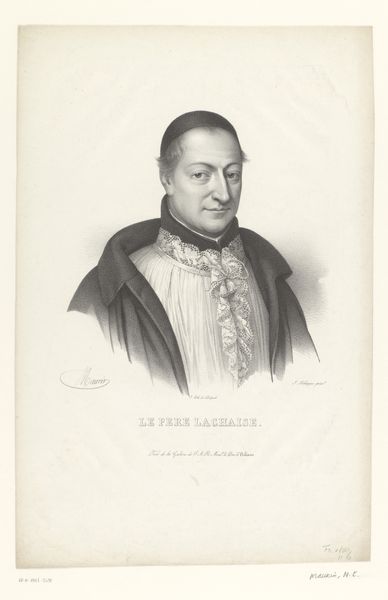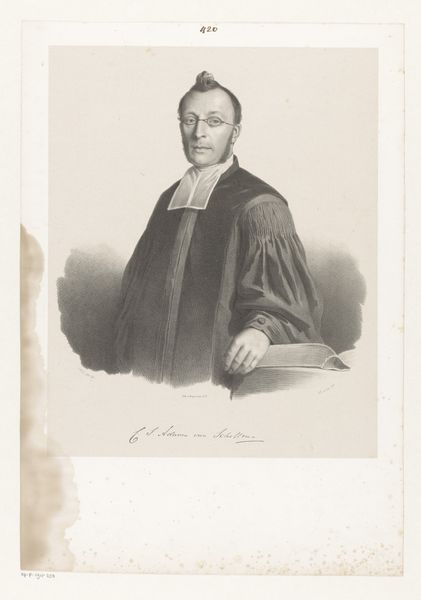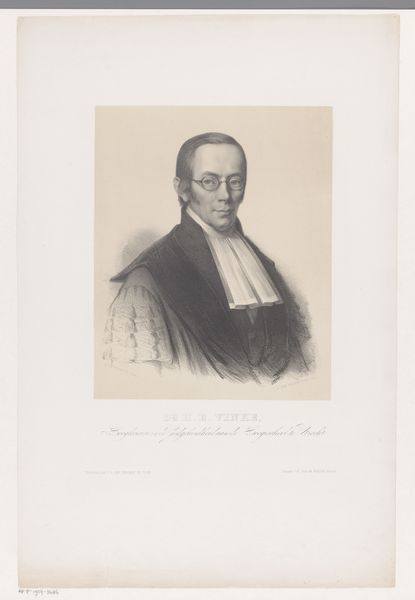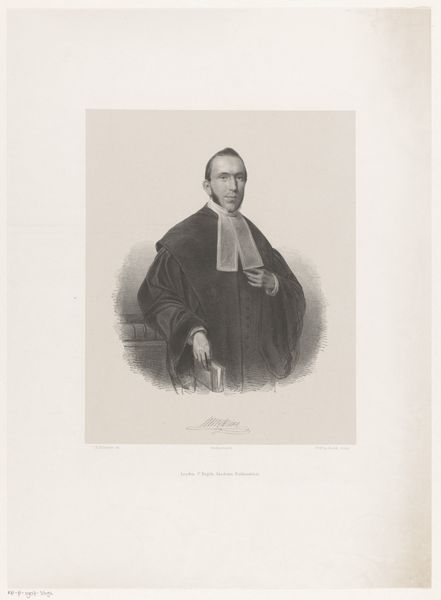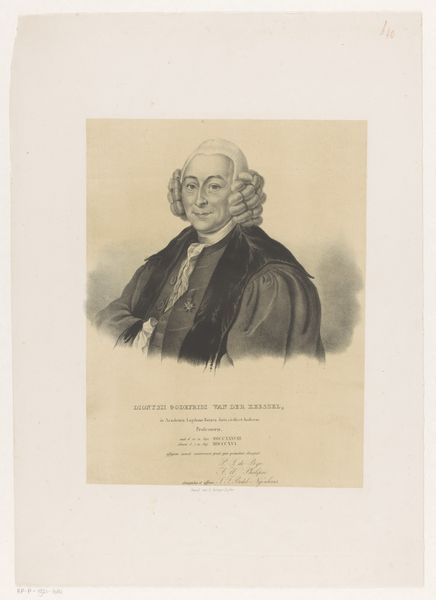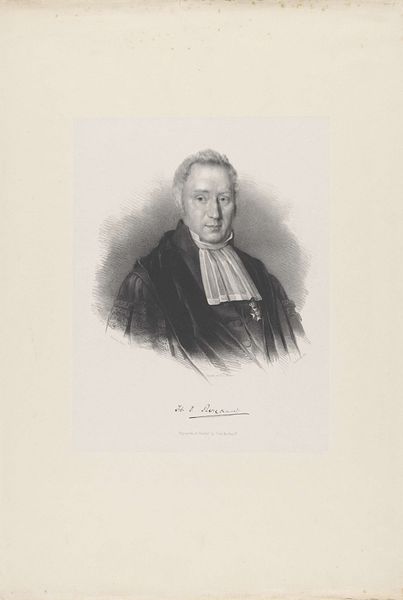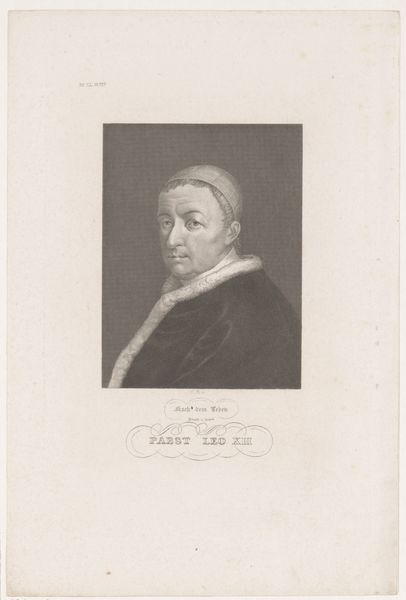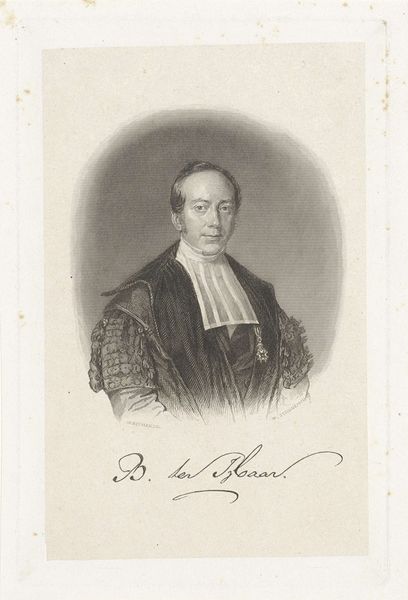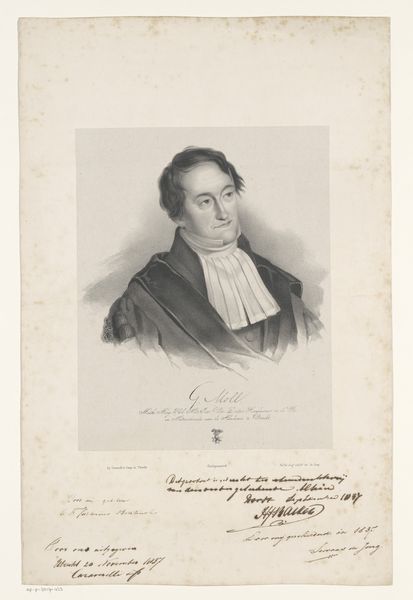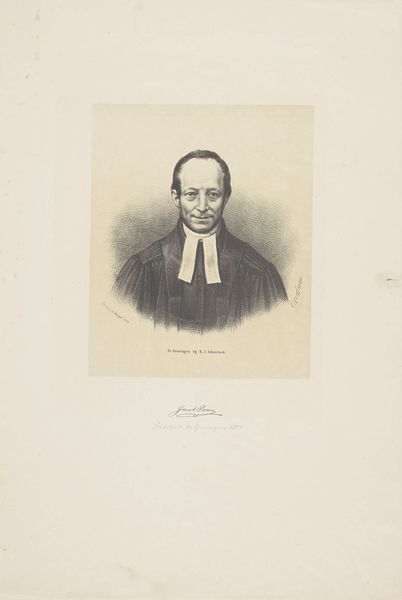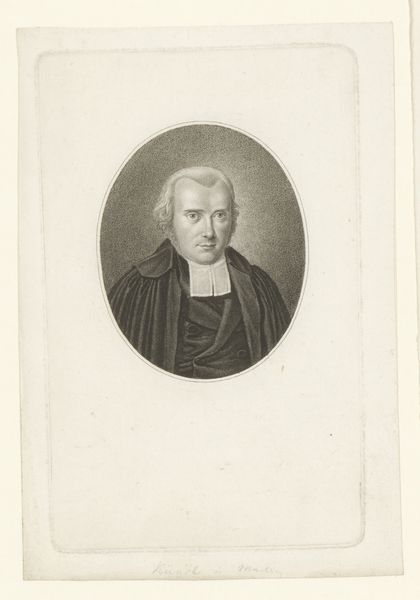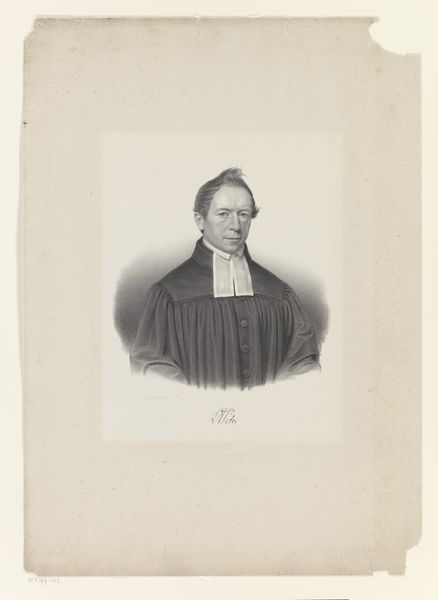
lithograph, print
#
portrait
#
neoclacissism
#
lithograph
# print
#
historical photography
#
academic-art
Dimensions: height 290 mm, width 230 mm
Copyright: Rijks Museum: Open Domain
Carel Christiaan Antony Last created this portrait of Joannes Clarisse, a professor in Leiden, using lithography, a printmaking technique that democratized image production. Lithography depends on the chemical repulsion of oil and water. The artist draws on a stone or metal plate with a greasy crayon, then applies water. The water adheres to the bare stone, while the greasy areas repel it. Ink, which is also greasy, is then rolled over the surface, sticking only to the drawn areas. Finally, paper is pressed against the plate to transfer the image. This process allowed for relatively quick and inexpensive reproduction, making images accessible to a wider audience and enabling the dissemination of portraits like this one. It speaks to the rise of a middle class eager to consume images of prominent figures. Looking closely, you can almost discern the hand of the artist in the subtle gradations of tone. So, when you look at this portrait, consider not just the sitter, but also the changing landscape of image production in the 19th century and its social implications.
Comments
No comments
Be the first to comment and join the conversation on the ultimate creative platform.
